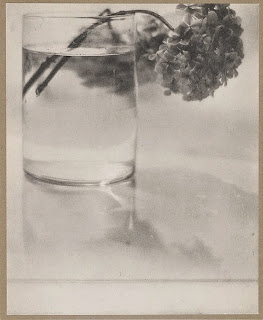I’ve
just handed in the French translation of E.L. James’ new Grey, a 14-hour-a-day, shackled-to-the-keyboard marathon during
which I must admit our seasonal top 10 wholly slipped my mind – hence this
belated contribution (that prose would soften anyone's... brain).
I
subsisted during my stint in the Red Room of Pain – aka my living room/office –
by spraying myself periodically with the bracing, mint-and-grass scented Herba Fresca one of the first Aqua
Allegorias. And a reminder that Guerlain was way ahead of the competition in
the faux-de-cologne genre since the collection goes all the way back to 1999.
I’ve
been having a tiny bit of a niche backlash these days. It kind of snuck up on
me: at this stage, and with summer coming on, I can do without the drama
queens, the fascinating weirdos and the 700th vetiver. I’ve been
drawn to abstract, sleek pieces like Alaïa, Paris which I’ve been wearing most days. I’m more aware of the mineral-animal
axis, but most people who’ve smelled it on me get into the fruity floral angle
(there’s an osmanthus effect though none is claimed).
Narciso is another one of these abstracts
scents: sniff it at certain angle and you’ll get the rose-vetiver bearing walls
of another great favorite of mine, Le Labo’s Ylang 49.
But while the latter plays a 1970s-style green chypre structure off the saline aspects
of salicylates (major components of ylang and responsible for “solar” notes),
Narciso Rodriguez’s new feminine gives off a grand, static milky haze. The “Oil
parfum” version is markedly woodier: a lick on the nape of the neck will do the
trick on a hot day.
Seamless,
non-figurative compositions – the olfactory equivalent of ambient music – are something
of an Alberto Morillas forte. Pending his upcoming Voulez-vous coucher avec moi for Kilian, a “flower milk” to be
released in October, his limited-edition Good Girl Gone Bad – Splash of Neroli blows a bubble of freshness into that great ball
of flowers. It is a scent I turn to when I just want to slide on the scented
equivalent of a décolletage -- like Guerlain’s Terracotta,
such a success last year it was brought back as a permanent reference. My
favorite version is actually the after-sun cream, which I use as a moisturizer
after I’ve showered with Yves Rocher’s classic, divine and dirt-cheap Monoï de Tahiti Lagoon Hair & Body Wash – I was turned on to it by Isabelle
Doyen, who was actually born in Tahiti and so knows her monoï. I’d bathe in
pools of the stuff.
I’ve
just written I could very well live with the 700th take on vetiver,
but to cut through all that tropical, lactonic, fruity floral frivolity, I
spritz on Prada’s Infusion de
Vétiver – with its
fizzy ginger bite, it’s just begging to be turned into a cocktail (mixologist
are become a fixture at perfume-y events, but that’s another story).
And
just to prove I’m not entirely off niche, I’ve recently rediscovered Miller
Harris’ Fleurs de Sel, a more aromatic, neo-hippie-chic descendant
of Dune by Dior – both being alternate-universe takes
on beach scents with nary a drop of calone, that play on the tannic effects of
narcissus to bring out the saltiness of vetiver and moss…
To
conclude, I’d like to share a bit of disheartening news. I hadn’t been walking
around Paris much (because of my 50 shades of translation misery), but two days
ago I found out that L’Artisan Parfumeur’s Grande Boutique on the rue de l’Amiral
de Coligny, opposite the Louvre, was no more.
That was where Bertrand
Duchaufour had his lab, and thus where Sévillle
à l’aube was conceived and birthed… I’m sure many of you dropped by there
at some point to pick up your favorites: it was one of the very few
freestanding L’Artisan boutiques left. Let’s just hope Puig knows what to do
with the brand. At this point, no news has filtered.
For
more top scents of summer, please visit my friends at:



